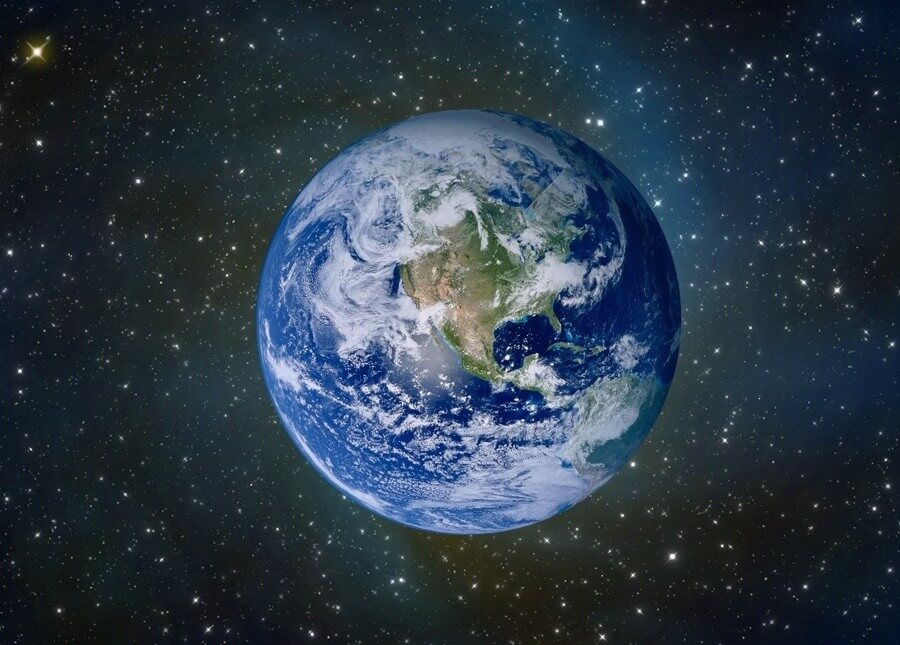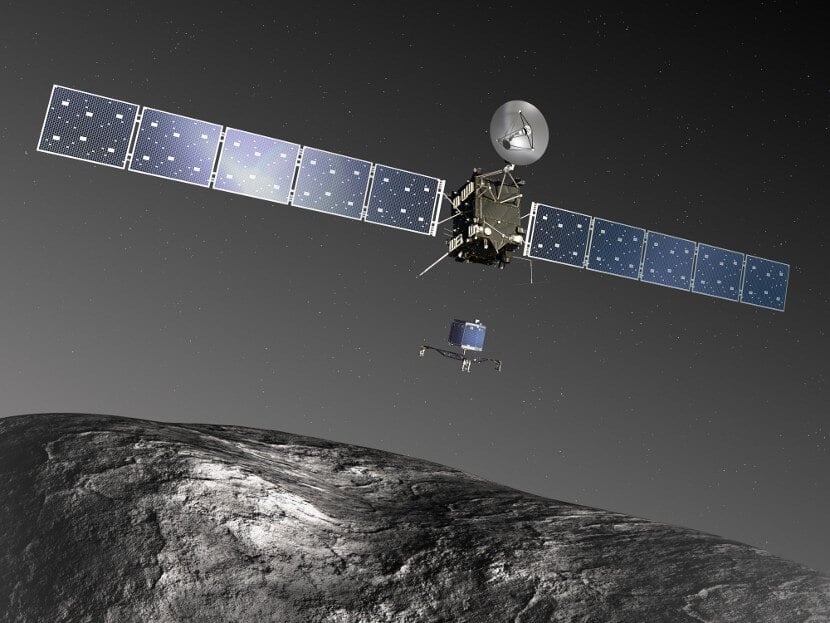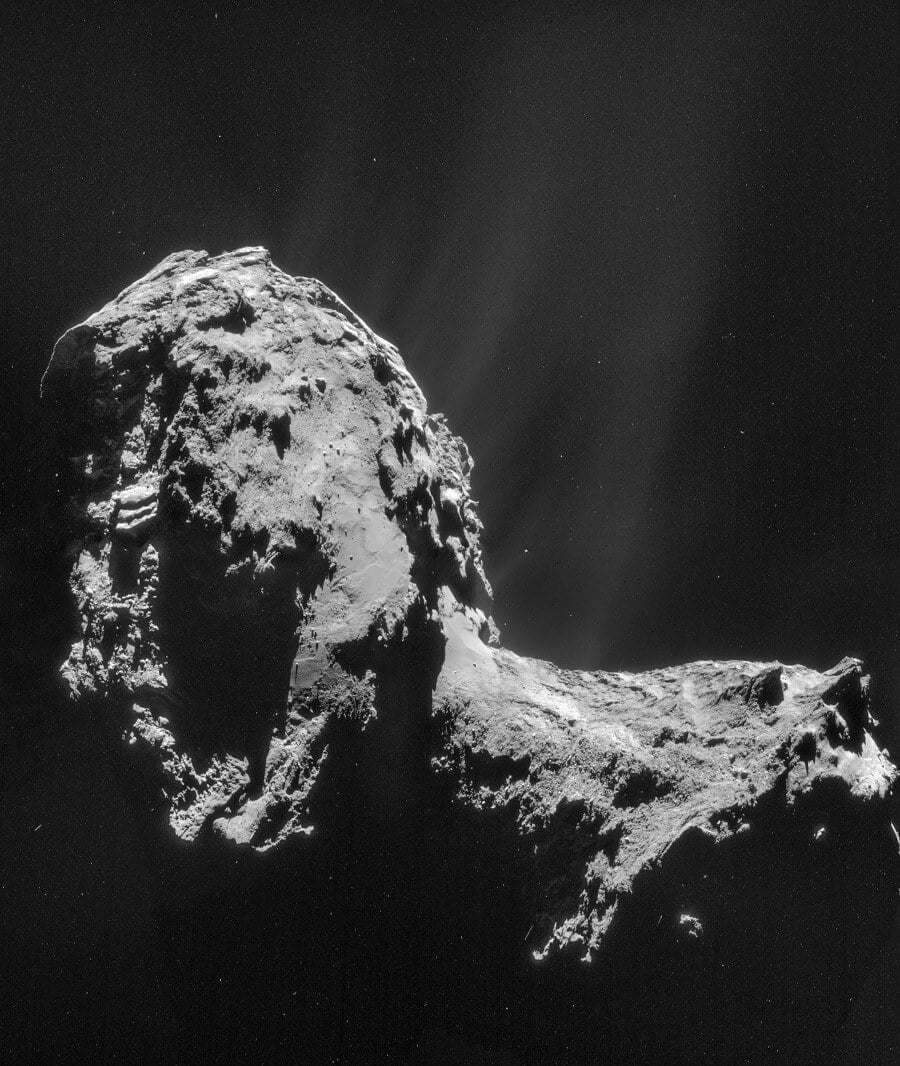- Get link
- X
- Other Apps

In a new article published in the scientific journal Science, researchers from the European Space Agency declare that the seas and oceans on our planet were most likely formed from water brought to Earth by asteroids, and not by comets, as many thought before. Such scientists' confidence is based on the data they obtained thanks to the Rosette spacecraft, which delivered the Fila space probe to the comet 67P / Churyumov-Gerasimenko. Traces of water found on a comet clearly give an understanding that it differs from that on our planet.
Evidence obtained by scientists suggests that the Earth, formed about 4.6 billion years ago, was a very hot place. The researchers believe that the temperature of the planet’s surface at that time was so high that the initial presence of water on it was impossible, because it would simply boil away.

However, as we can see now, almost two thirds of the surface of our planet is covered with water, fresh or salt. But if the Earth was too hot to save water on its surface, then where did all these seas and oceans come from?
As stated in the article in the journal Science, scientists suspect that the water covering most of our surface was brought to Earth from space. However, science has still not been able to figure out exactly how water from space could get to the planet. The scientists' suspicions fell on comets and asteroids, but they were not completely sure of their guesses.
Whatever cosmic bodies deliver water to Earth, it most likely happened somewhere after 800 million years since the formation of our planet. Otherwise, the water entering the Earth would have to face incredibly high temperatures, preventing it from being kept on the surface.

In a statement, scientists from the European Space Agency explain that according to data obtained through the Rosetta spacecraft, the water particles found on comet 67P / Churyumov-Gerasimenko are very different from the water that is present on Earth. It turned out that these celestial bodies (comets) contain heavier particles of water, each of which represents the concentration of the hydrogen atom, deuterium and oxygen. For those who do not know, deuterium is a hydrogen isotope that has one extra neutron. For comparison: only 3 out of every 10,000 water molecules on Earth are heavy molecules. Based on these data, scientists come to the conclusion that if our water were brought to our planet by such cosmic bodies as comet 67P / Churyumov-Gerasimenko, widely found in the Kuiper Belt, then heavy water molecules would be encountered on Earth much more often.

Comet 67P / Churyumov - Gerasimenko
It is also worth noting that in 2011 the Herschel Space Observatory of the European Space Agency discovered on comet 103P / Hartley, also flown from the Kuiper Belt, similar to the terrestrial deuterium-hydrogen ratio. However, scientists do not believe that this is evidence that water was “brought” to Earth from the Kuiper Belt. Even if we assume that the Earth was once bombarded by comets similar in size to the 103P / Hartley cosmic body, in the case of comet 67P / Churyumov-Gerasimenko, only one cosmic body of this size would be required to make serious changes in the composition of water our planet and enrich it with a high concentration of deuterium atoms.

Since it is believed that comets originate in the Oort Cloud, scientists point to the case of 1986, when the Giotto space probe studied Halley's comet and found a double concentration of heavy molecules in it compared to ordinary water molecules on Earth. Scientists come to the conclusion that similar indicators are also true for other comets.
In the light of recent discoveries, scientists point to asteroids, saying that it was these cosmic bodies that most likely could have delivered water to Earth billions of years ago. Researchers believe that even if every single asteroid would not contain a large concentration of water, the army of such space bodies would definitely cope with this task.
"Of the 11 examined comets, only one, 103P / Hartley, belonging to the Jupiter type, showed in 2011, within the framework of the ESA Herschel mission, it is similar to the terrestrial composition of water molecules present in it," the scientists comment.
“For comparison, the same meteorites, formed from asteroids originating in the asteroid belt, contain almost identical composition of Earth’s water molecules. And although asteroids themselves contain generally less water, compared with comets, a large number of their collisions with the Earth could be the result of today's earthly oceans, ”the researchers add.
The article is based on materials .
- Get link
- X
- Other Apps
Comments
Post a Comment